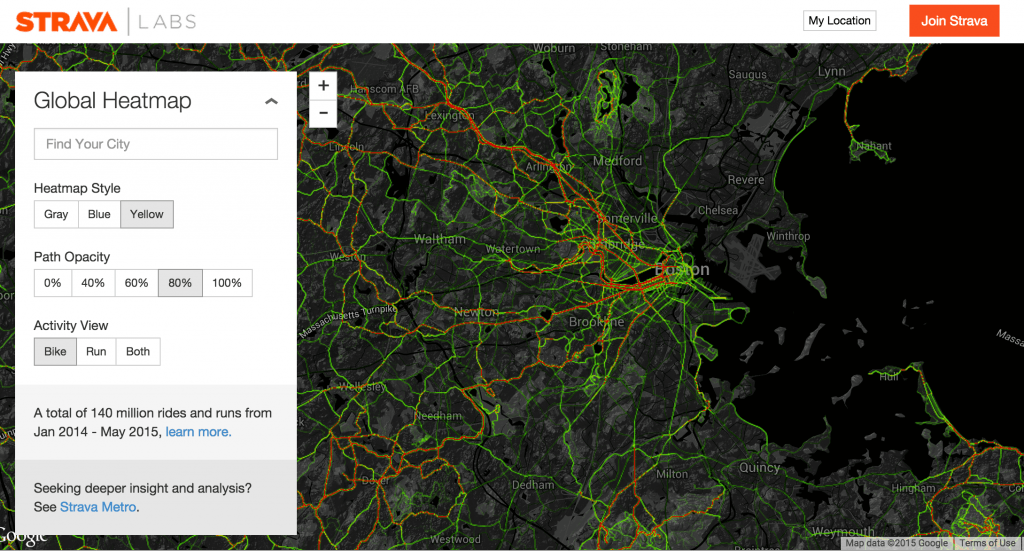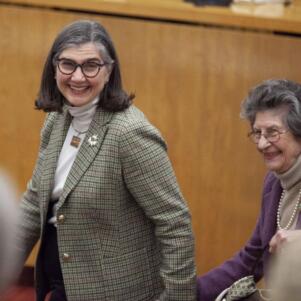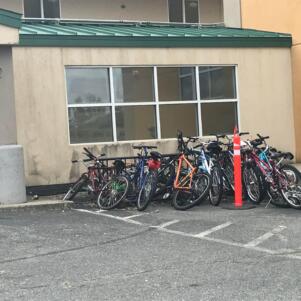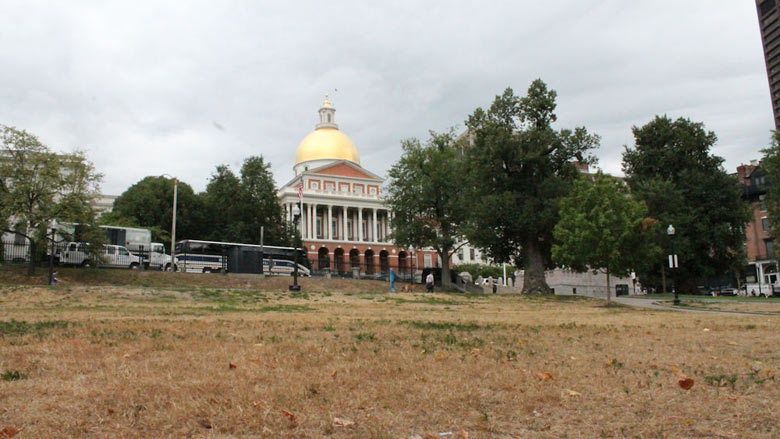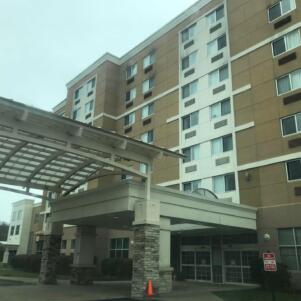Making Massachusetts safer for bicycling
By Beth Treffeisen | August 27, 2015, 5:02 EDT
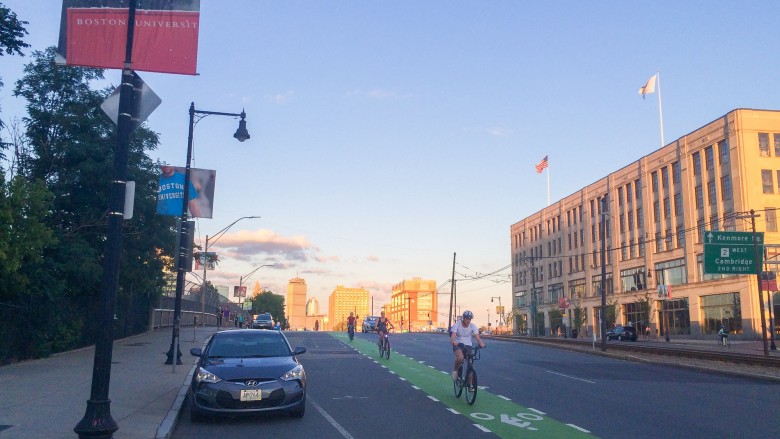
During the week, Sivia Sadofsky rides her bike through the Boston area on her commute to work. Each day brings new challenges, such as open car doors, inattentive pedestrians, and double-parked cars blocking bike lanes that she has to circumnavigate on her journey through busy streets.
“Give me a break. The cars are trying to hit me, you guys are trying to hit me, like what’s going on?” said Sadofsky, who works for Redi2 Technologies in Boston.
Sadofsky believes that if cars, pedestrians, and cyclists gave each other a little extra space and learned more about the rules of the road, it would go a long way toward making the streets safer for everyone.
Concerns for the safety of Boston cyclists were heightened earlier in the month when a flatbed truck struck and killed cyclist Anita Kurmann on the corner of Massachusetts Avenue and Beacon Street in Boston’s Back Bay neighborhood.
“I think that it is a break down in communication,” said Josh Zisson, a lawyer specializing in bike law in Boston. “I think that a lot of bicyclists take for granted that drivers understand why they are riding a certain way, and I do think a lot of cyclists do run red lights, and that’s something I am definitely against. But for the drivers, they just see someone who doesn’t care about the law.”
According to the US Census American Community Survey, bicycle commuting has risen from 1.3 percent in 2009 to 1.8 percent in 2013. Curiously, the increase in ridership is outpacing the number of crashes.
“As you get more and more cyclists something miraculous happens,” said Richard Fries, Executive Director of MassBikes. “When you add more bikes into the transportation mix, that has been proven in every study, it becomes safer for other cyclists to do it.”
According to the League of American Bicyclists, until recently, Massachusetts was one of the worst cycling states in the country. In 2009, it ranked only 19th in bicycle-friendly states. The states ratings improved in 2014 when it ranked 10th, and this year, Massachusetts rose to 4th place.
The reversal is largely due to a number of things including the Boston Bike Network Plan. In 2013, the proposal established a 120 mile network of bicycle tracks in Boston, with plans to increase the allotment to 195 miles by 2018 and 356 miles by 2043. Throughout Massachusetts, however, there are not many bike paths outside of Boston. The Department of Conservation and Recreation is working to improve this disparity. As the largest landowner in Massachusetts, it plans to build a large network of bike paths throughout the state within the next 10 years. Fries believes their plan will result in Massachusetts being ranked first among bicycle-friendly states as soon as next year.
On-road and off-road bike trails. Dotted lines are plans for next year: View larger Trailmap
Despite the improved track network, bicyclists still run into problems. Their major concerns include potholes and disintegrating infrastructure, which force cyclists to swerve around the obstacles and push them into traffic.
During a recent online Meetup discussion at Boston Area Cycling, Mark Shamon said, “The city could do much good in the short term by fixing potholes, rebuilding catch basin and manhole tops to repair collapsed pavement, and sweep the streets way more often.”
The city’s lack of public education and driving enforcement is another major concern for bicyclists. Central Square resident Dan Kent said, “I don’t think the city does enough to remind drivers of how to share the road and passing cyclists on certain roads is against the law.”
At the same time, however, more needs to be done to educate cyclists. In 2014, the Brookline police handed out 1,218 citations for bicycle violations. In Cambridge that same year, 1,627 bicycling citations were written. By contrast, the Boston Police Department gave only 350 tickets to cyclists for violations such as running red lights and riding against traffic.
“I really think the police need to start enforcing more traffic laws with cyclists,” said Logan Roise from Cambridge, who commutes into the financial district. “I see way too many [bicyclists] blowing through intersections without looking and dangerously weaving in and out of traffic. Actions like this make drivers hate cyclists which in turn makes it harder for cyclists to navigate the city.”
Roise also believes that the city needs to be more bike-friendly. According to the Boston Globe, within the last five years 13 people where killed while bicycling on the streets of Boston. Of those 13 accidents, with the exception of two, bicyclists were killed by vehicles over five tons, such as dump trucks, tractor-trailers, or MBTA buses. The two exceptions were accidents involving intoxicated automobile drivers.
“I think the important thing to take away from that situation is that when it comes to bike crashes there are a lot of different causes,” said Zisson. “Sometimes it’s driver error, sometimes it’s the fault of the bicyclist, infrastructure, potholes, and there are all sorts of things. But when it comes to fatalities there is a very obvious trend.” Zisson believes that this trend of large vehicles being the culprit for fatalities calls for concerted action to address the specific problem.
Last May, the Boston City Council passed an ordinance requiring all trucks, as well as every contractor and vendor operating in the city, to have side guards. According to their press release, the ordinance requires those vehicles to be equipped with convex blind spot mirrors, crossover mirrors, and blind spot awareness decals.
When asked if other cities and business in the region will follow Boston’s lead, Vineet Gupta, Director of Planning for the City of Boston, said “Yes, absolutely, I think that other communities around Boston are also questioning this.”
The city has plans to redesign one of the most crash-heavy areas on Commonwealth Avenue, between the T-stop Packard’s Corner and the Boston University Bridge. A new bike path will also be part of the Historic Boston trail around the North End. Last March, Mayor Walsh announced another initiative with the adoption of Vision Zero. The theme is that traffic fatalities are not accidents, but rather crashes that can be prevented by effective policies and community engagement. The mayor created a task force to develop an effective strategy to eliminate traffic fatalities and injuries in Boston.
In addition to these initiatives, there is considerable discussion about helmets and ensuring that bicyclists are wearing them. Zisson believes that regardless of whether a cyclist is wearing a helmet, it still does not guarantee their safety or reduce the number of crashes. Zisson said, “Whereas distribution of lights for bicyclists and enforcement of the existing laws of people riding at night to have lights on their bike, that’s something that actively prevents crashes from occurring.”
Although there are many initiatives in both Boston and in greater Massachusetts to make bicycling safer, a lot more remains to be done. But as Fries said optimistically: “it’s happening, and it’s happening really fast.”
Contact Beth Treffeisen at [email protected]
NBPUrban

